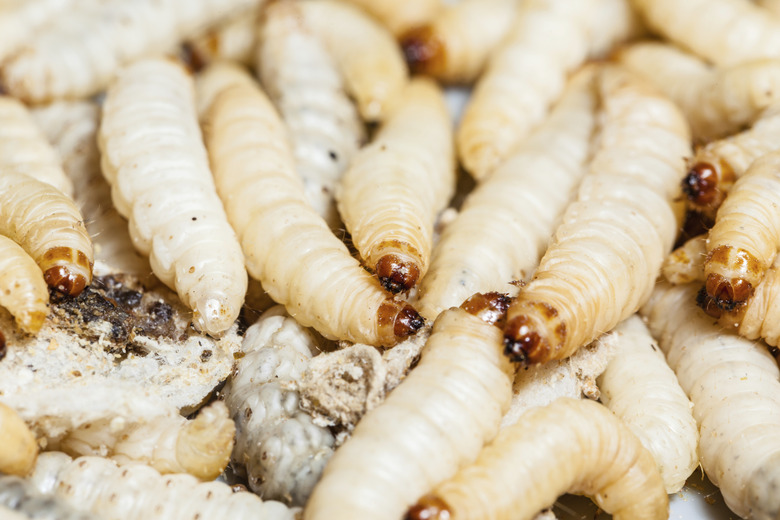How To Control Root Maggots
Few poems are written about root maggots, few songs sung in their honor. Root maggots, the larvae of root maggot flies, are fat, gray-white grubs with pointy heads and can grow 1/3 inch long.
Few[ [root maggots ]](https://www.gardenguides.com/12251297-will-salt-kill-maggots.html)poems are written about root maggots, few songs sung in their honor. Root maggots, the larvae of root maggot flies, are fat, gray-white grubs with pointy heads and can grow 1/3 inch long. They live about two to five weeks, but in that time they manage to annoy many gardeners by eating their way through crops' roots. Controlling these pests requires an understanding of what they do and why.
Life History
You would be hard-pressed to distinguish a root maggot fly from a regular, small housefly, unless you observed the insect laying eggs in early spring. Female root maggot flies can lay more than 100 eggs at the base of a single plant over several days. The eggs hatch in 10 days or fewer, and the young larvae burrow into the plant roots, eating as they go. This dinner kills and damages vegetables and sometimes entire crops. The larvae mature, emerge as adults, mate and the females lay more eggs.
- Few poems are written about root maggots, few songs sung in their honor.
- They live about two to five weeks, but in that time they manage to annoy many gardeners by eating their way through crops' roots.
Damage Identification
Typical root maggot target crops include onions (Alliuim spp.), cabbage (Brassica oleracea capitata group), broccoli (Brassica oleracea italica group), cauliflower (Brassica oleracea botrytus group), brussels sprouts (Brassica oleracea gemmifera group) and turnips (Brassica rapus rapifera group). Initially, affected plants yellow; they may wilt and die, especially if they are seedlings. The most severe damage to root crops, however, occurs beneath the soil, where the maggots cut tunnels through the plants' roots, and those areas become filled with rot and disease.
An Ounce of Prevention
The most efficient manner of controlling root maggots is to prevent the flies from laying eggs on crops. One method is to protect the crops with floating row covers, lightweight fabric that allows light and water to pass but keeps bugs out. This method works only when the row covers are in place before any eggs are laid; otherwise, the larvae will thrive, protected beneath the row covers. An alternative is to position circular cardboard or tar paper collars around each crop transplant. Each circle should be about 4 inches in diameter and have a center hole sufficiently large enough for the plant's stem. Slit one side of each collar so that you can slip the collar into place around a plant.
- Typical root maggot target crops include onions (Alliuim spp.
- ), This method works only when the row covers are in place before any eggs are laid; otherwise, the larvae will thrive, protected beneath the row covers.
Soil Protection
Root maggot flies lay their eggs in cracks in the soil at the base of edible plants. You can prevent this by piling items on the earth. Layer 1 inch of wood ash around your plants, choosing ash from hardwood rather than treated wood. Alternatively, sprinkle your garden with rock phosphate or diatomaceous earth. In yesteryear, gardeners mixed 1 cup of lime with 1 quart of water and let the solution sit overnight. The following morning, the clear water was removed and poured on the soil around the base of vulnerable plants to keep flies away. A layer of oak leaves also may work well.
- Root maggot flies lay their eggs in cracks in the soil at the base of edible plants.
- The following morning, the clear water was removed and poured on the soil around the base of vulnerable plants to keep flies away.
Good Cultural Practices
It pays to clean up your garden before you plant, during the growing season and after harvest, and sanitation might help control the root maggots, too. Clean up your garden beds affected by root maggots, even if you had to abandon the crops. Remove weeds and plant debris regularly, and rotate crops; move crops attacked by root maggots as far as possible from their old location.
